
Adoxaceae - elderberry family
Taxonomy: Worldwide there are 5 genera and approximately 200 species in the Adoxaceae. Three of the genera are herbaceous; two are woody. Only the two woody genera are found in Maine.
Habit: Plants of the Adoxaceae in Maine are shrubs (i.e., woody perennials with usually multiple stems).
Leaf arrangement: opposite.
Flowers: radially symmetric; bisexual (except the enlarged, sterile, marginal flowers of the inflorescences of Viburnum lantanoides and Viburnum opulus)
sepals 5
petals 5, white
stamens 5
pistil 1; ovary inferior
Fruit: drupe
Maine is home to 10 species in 2 genera that grow without cultivation. If you already know which species you have or are interested in learning about, click on the appropriate species link below. Otherwise, to determine which genus that the plant in question belongs to, refer to the table immediately below the species list.
Sambucus (2 species)
Sambucus nigra - black elderberry
Sambucus racemosa - red elderberry
Viburnum (8 species)
Viburnum acerifolium - maple-leaved viburnum
Viburnum dentatum - smooth arrowwood
Viburnum edule - squashberry
Viburnum lantana - wayfaring tree
Viburnum lantanoides - hobblebush
Viburnum lentago - nannyberry
Viburnum nudum - withe-rod
Viburnum opulus - highbush-cranberry
| leaf type | |
| Sambucus | pinnately compound |
| Viburnum | simple |
Sambucus (elderberry)
Etymology: The Latin name for the elder was sabucus (genitive singular sabuci; second declension but feminine). In his Natural History (16:103), Pliny referred to “sabucus cui medulla plurima” (literally, “elder which with most pith”). Fernald in the 8th edition of Gray's Manual of Botany (1950), suggested that sabucus was “perhaps from the Greek sambuce” (σαμβυκη) because whistle-like musical instruments could be made from “tubes of bark” by removing the pith, but Liddell and Scott's Greek-English Lexicon describes σαμβυκη as “a triangular musical instrument with four strings”.
| twig pith color | flowering time | inflorescence shape | fruit color | |
| Sambucus nigra | white | July and August | flat-topped | purple-black |
| Sambucus racemosa | orange-brown | May and June | conical | red |
Sambucus nigra (black elderberry). This species’ edibility (“acceptable”), medicinal properties, and other uses are described in some detail in volume 1 of Ancestral Plants2, by Arthur Haines.
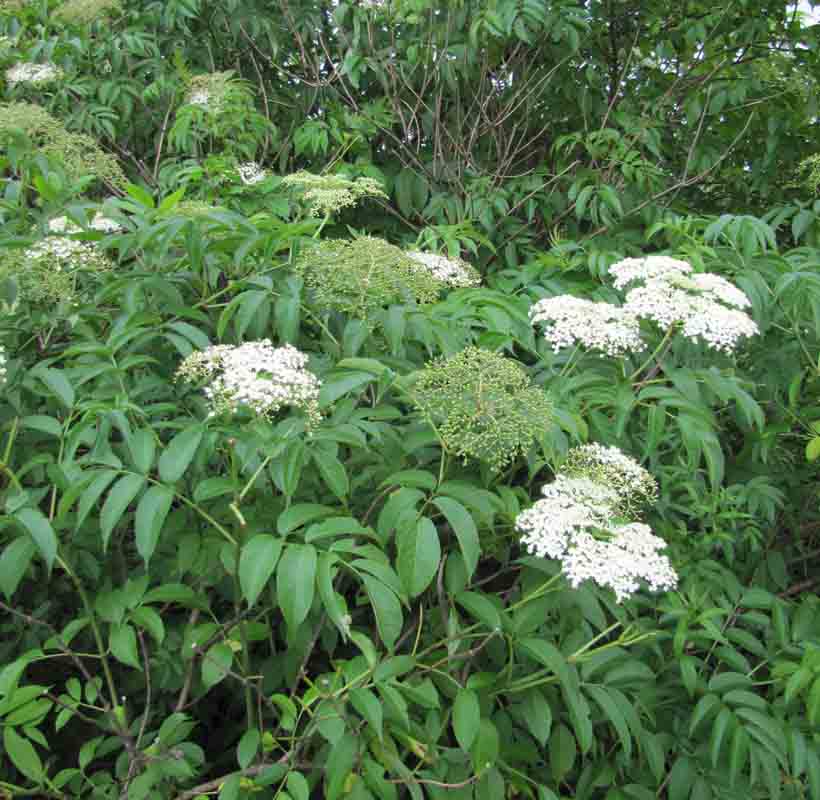
(click on image to enlarge)
Sambucus racemosa (red elderberry). [information to be added]
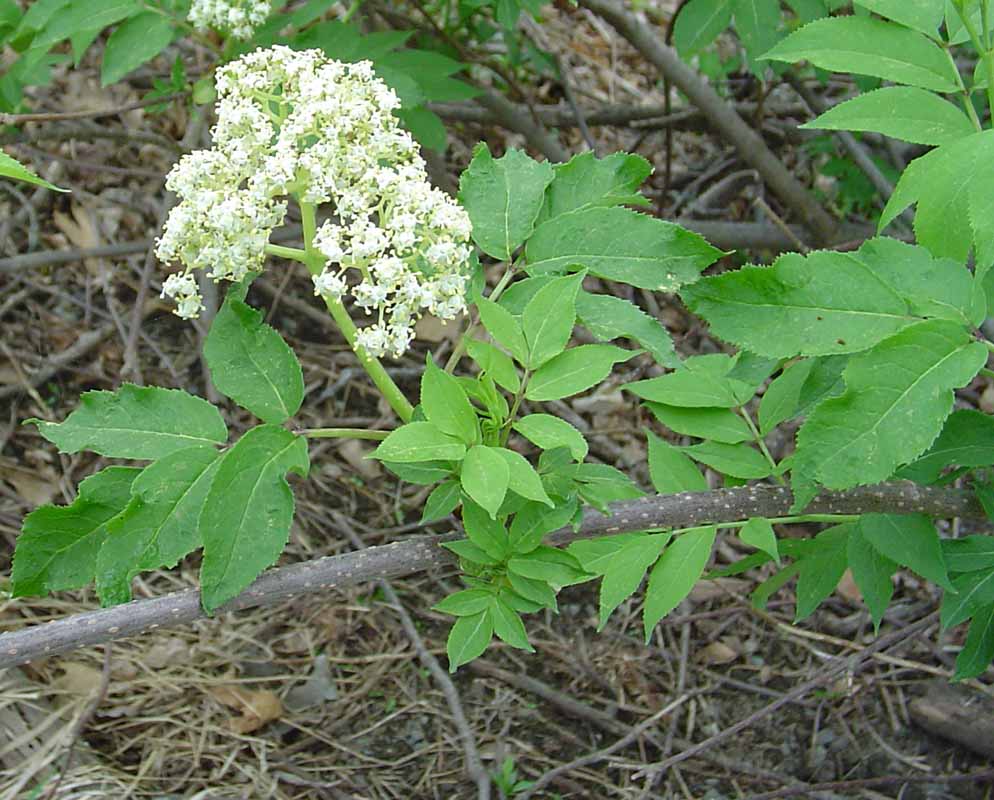
(click on image to enlarge)
Viburnum is both the scientific name and the common name of the genus.
| red font = unique character state or nearly so | leaf blade outline | flowers | bud scales | glands near top of petiole | twig and leaf pubescence | stipules at base of petiole |
| Viburnum acerifolium | palmately 3-lobed | all bisexual, of uniform size | present (3 or more) | absent | stellate | present |
| Viburnum dentatum | unlobed, distinctly toothed | all bisexual, of uniform size | present (4) | absent | simple | absent |
| Viburnum edule | palmately 3-lobed (apical leaves may be unlobed) | all bisexual, of uniform size | present (2) | |||
| Viburnum lantana | unlobed | all bisexual, of uniform size | absent | stellate | ||
| Viburnum lantanoides | unlobed, finely toothed, nearly round | marginal flowers neutral, larger than inner, bisexual ones | absent | absent | stellate | absent |
| Viburnum lentago | unlobed | present | ||||
| Viburnum nudum | unlobed, entire or finely toothed | all bisexual, of uniform size | present | absent | simple | absent |
| Viburnum opulus | palmately 3-lobed | marginal flowers neutral, larger than inner, bisexual ones | present (2) | present | simple | present |
Viburnum acerifolium (maple-leaved viburnum) is aptly named. The leaves are palmately lobed, giving them the look of a maple leaf, but they bear stipules (not shown in the image below but see V. opulus for a good view of stipules), which you will not find on maple leaves.
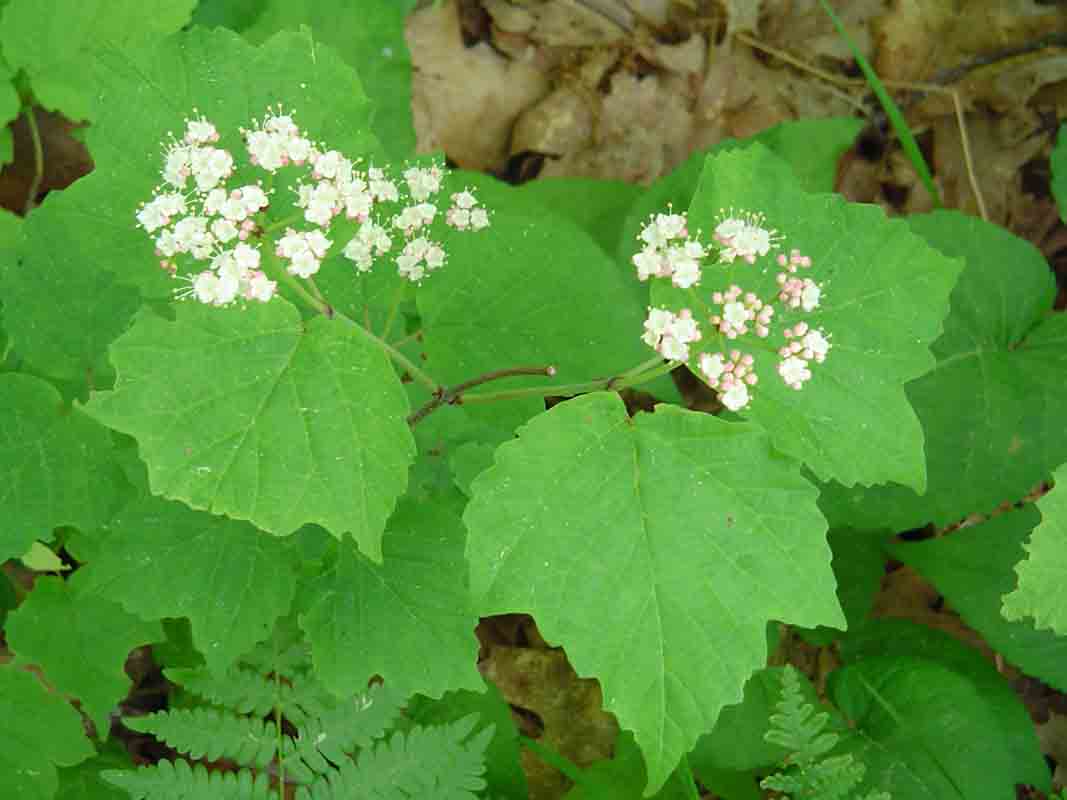
(click on image to enlarge)
Viburnum dentatum (smooth arrowwood) has the most prominently toothed leaves of all the viburnums.
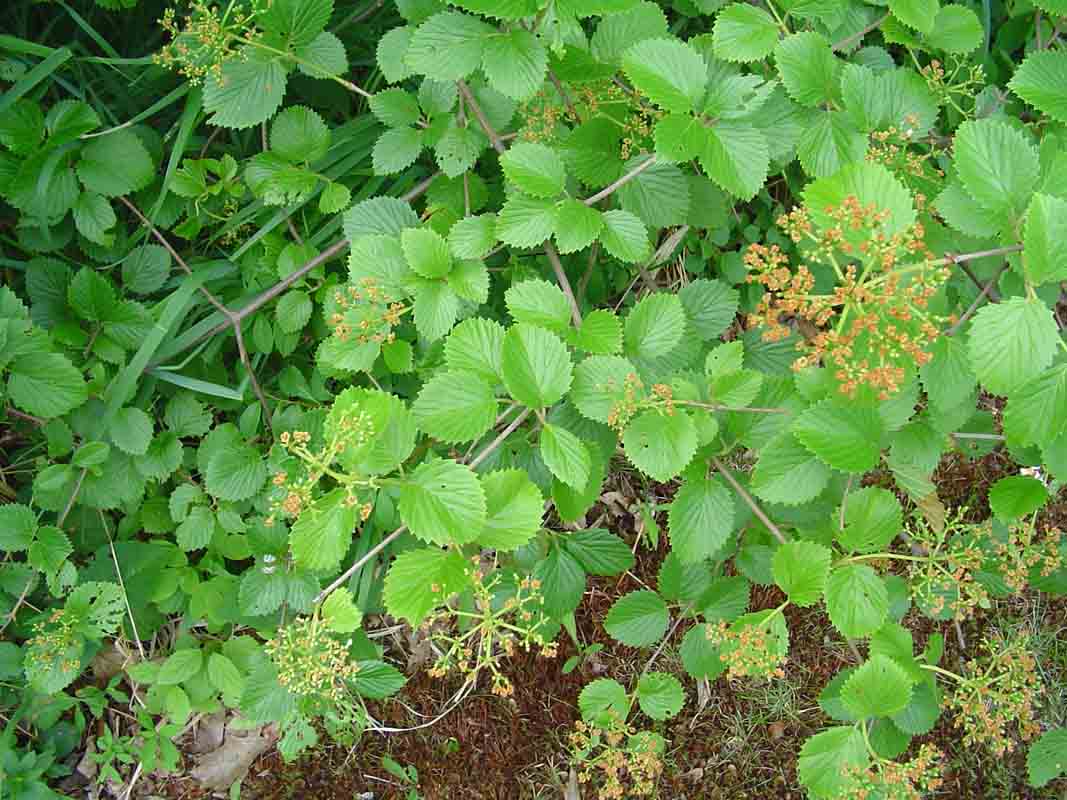
(click on image to enlarge)
Viburnum lantanoides (hobblebush) is one of the two viburnums in Maine that have inflorescences with sterile flowers around its margin (see image at lower left). (Viburnum opulus is the other species with marginal sterile flowers.) Its leaves are nearly round in outline. (see image at lower right.)

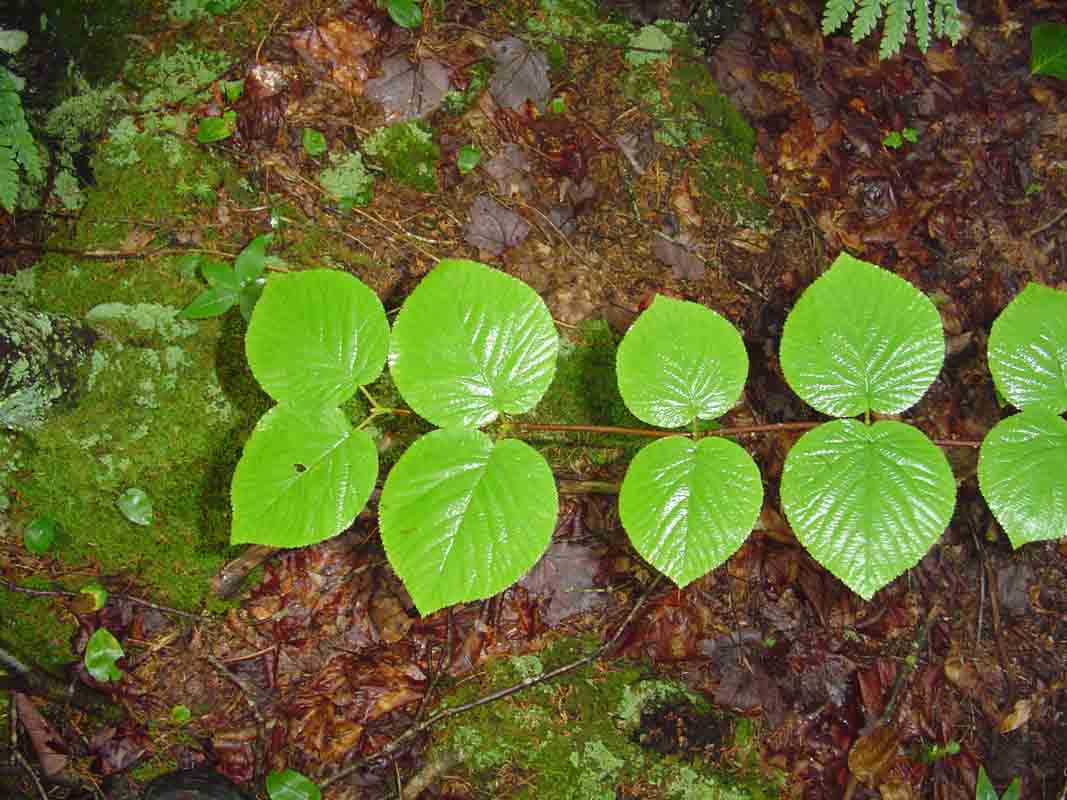
(click on an image to enlarge)
Viburnum nudum (withe-rod) is sometimes called wild-raisin because its fruit shrivels with time and resembles a raisin. It is edible, but do not try any of the fruits that turn blue well ahead of the majority. Its leaves have a prominent, light-colored midvein on the adaxial (upper) surface.

(click on image to enlarge)
Viburnum opulus (highbush-cranberry) is not a true cranberry, as the hyphen in its common name indicates, but is so-named because its fruits do resemble cranberries. There are two subspecies of V. opulus, one native and one nonnative. According to Mittelhauser et al. (2010)1, the plants on Mount Desert Island are thought to be the nonnative subspecies. This is unfortunate for foragers on that island because the taste of the nonnative subspecies is “unpleasant”3.
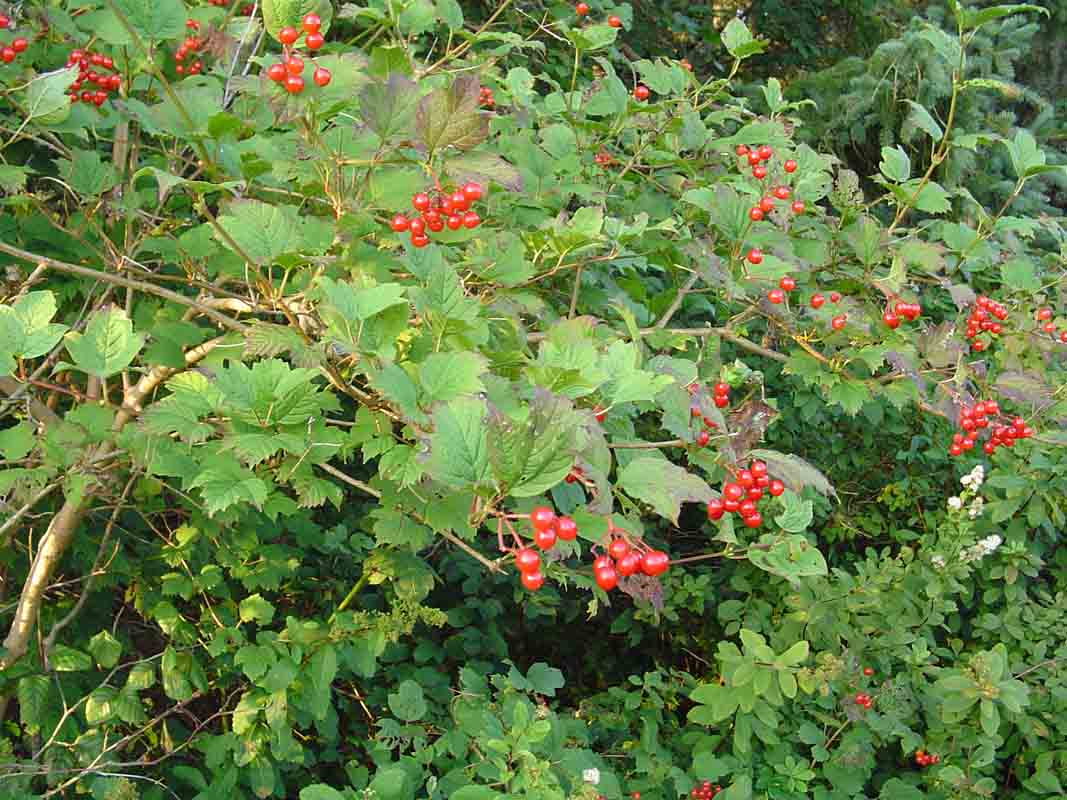
(click on image to enlarge)
The leaves of Viburnum opulus have stipules (as do the leaves of V. acerifolium) as well as glands (image below).
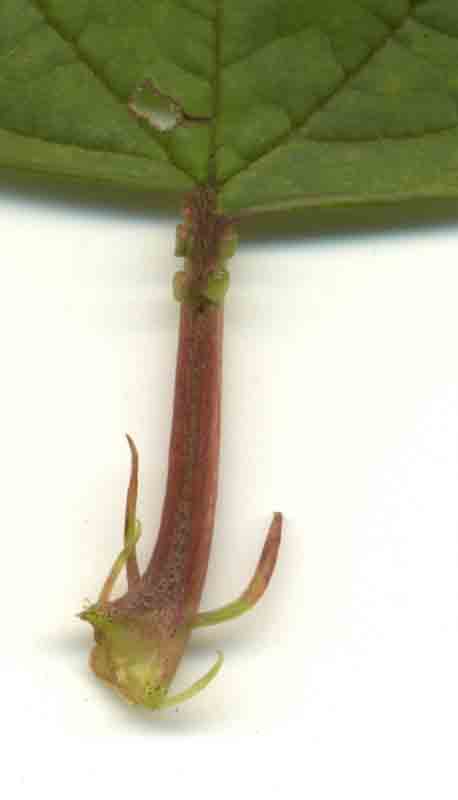
(click on image to enlarge)
Like Viburnum lantanoides, V. opulus has an inflorescence with enlarged, sterile flowers around the margin.
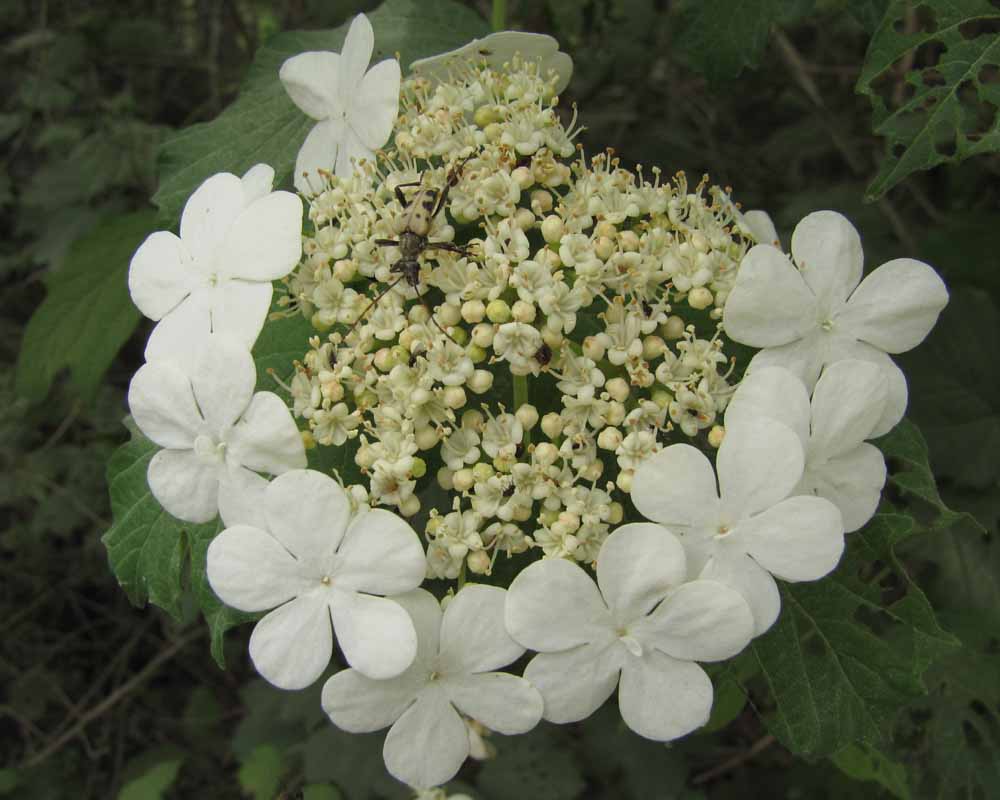
(click on image to enlarge)
Notes:
1The Plants of Acadia National Park (ISBN 978-0-89101-120-0) by Glen H. Mittelhauser, Linda J. Gregory, Sally C. Rooney, and Jill E. Weber, published in 2010 by the University of Maine Press.
2Ancestral Plants, volume 1 (ISBN 978-0-9842945-0-3) by Arthur Haines, published in 2010.
3Ancestral Plants, volume 2 (ISBN 978-0-9842945-1-0) by Arthur Haines, published in 2015.